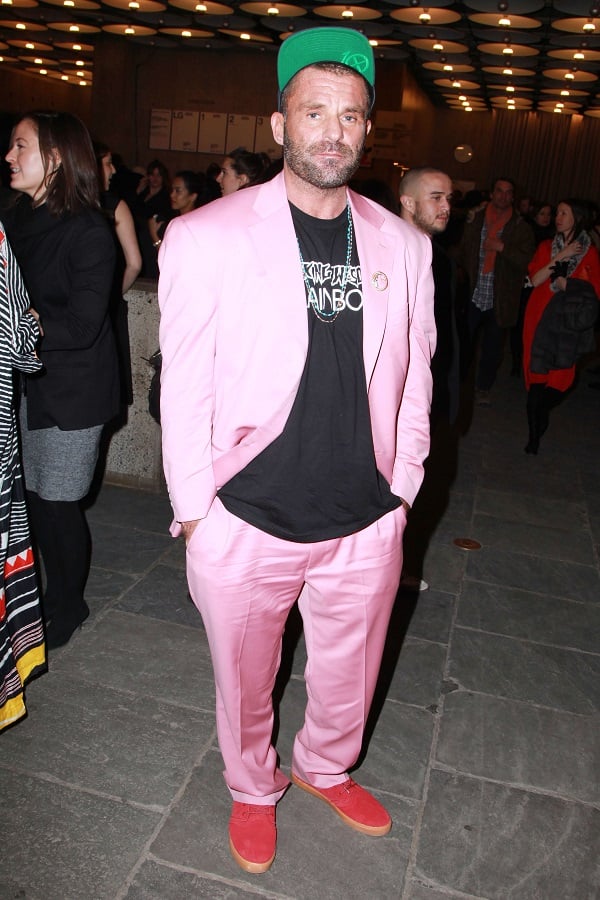Art & Exhibitions
Bjarne Melgaard Show at Munch Museum Faces Criminal Investigation
You can't mess with Norway's national hero.

Photo J Grassi/PatrickMcMullan.com ©Patrick McMullan.
You can't mess with Norway's national hero.

Hili Perlson

The controversial exhibition at Oslo’s Munch Museum, “The End of it Has Already Happened,” which draws connections between Edvard Munch and Norway’s enfant terrible Bjarne Melgaard, has been reported to the police, the Norwegian site newsinenglish.org confirms.
“We are aware that a complaint has been filed,” Stein Olav Henrichsen, director of the Munch Museum, which opened recently (see Edvard Munch Museum Gets Go-ahead), told the newspaper Aftenposten. The exhibition’s curator, Lars Toft-Eriksen, wrote in an email to ARTnews, “the museum is being investigated by the police for criminal [offenses].” The museum is now “awaiting the report from the police.” But the curator stands firmly behind his exhibit, adding that for now the exhibition is “running unaltered.”
The complaint was reportedly directed at a 40-minute video entitled All Gym Queens Deserve to Die (2000). The same work, Melgaard’s first video, already caused controversy in Scandinavia in 2000 when it was included in Stockholm’s Moderna Museet’s group exhibition “Organising Freedom.” Back then, the work was denounced by both Swedish UNICEF and EPCAT, a child-welfare NGO, for its purported violation of child-abuse laws, and was swiftly withdrawn from display. The strong reactions were due to a scene in which a man sucks on the arm of a baby girl.
Well aware of the past controversy, Henrichsen insisted the museum had conducted a “thorough evaluation” of the work before it was exhibited.
Since its opening in January, the show has provoked quite a scandal, attracting reactions ranging from praise to enraged complaints–including above all those directly from Edvard Munch’s descendants. Several critics decried the so-called “inappropriate pairing” of Munch with Melgaard’s explicitly sexual artworks, while Munch’s family claimed it cheapened the Norwegian national icon’s work. The exhibition juxtaposes, for example, the 1910 version of The Scream with Melgaard’s photograph of a man engaging in autoerotic asphyxiation.
Others went so far as to accuse the artist and the exhibition’s organizers of pedophilia, ARTnews reported, which finally led to the police report.
Melgaard’s show is the first in a series devised by the Munch Museum that displays the work of an artist alongside the institution’s namesake. Future exhibitions in the series are slated to include names such as Jasper Johns and Vincent van Gogh.
It is perhaps no coincidence that Melgaard was chosen as the first artist to shed new light, through juxtaposition, on Munch’s artistic legacy. Munch was no stranger to controversy himself and could hardly be described as conventional for his time. Munch’s painting Puberty, for example, is an image of “this frail little girl and an almost phallic shadow on the wall behind her,” as Ina Blom, a professor of art history at the University of Oslo, describes. She stated in an ARTnews interview that “people have forgotten about the scandal Munch used to cause.”
Writing in the Cornell Daily Sun, Shay Collins raises an important question: “The attempt to shut down the Munch Museum exhibition leads to a consideration of burden of proof. In the current art climate, critics have to prove that the offending work deserves censorship far more often than artists have to fight to keep their provocative works displayed.” (See Exhibit B Might Be Offensive To Some But That’s No Reason to Close It Down and Why Self-Censorship of Controversial Artwork is Wrong.)
Collins also praises curator Toft-Eriksen for “eating up all of the exhibit’s ‘bad’ press,” especially when pitted against Museo Jumex’s decision to drop its Hermann Nitsch exhibition after a few thousand animal rights activists signed a petition (see Museo Jumex Cancels Hermann Nitsch Show Over Animal Rights Protest).
Melgaard wittingly provokes controversy with his work. His themes range from the abject to various paraphilia, race, homoeroticism, and defilement.
An image of art promoter Dasha Zhukova (see Dasha Zhukova to Debut Moscow’s Rem Koolhaas–Designed Garage Museum June 12) pictured seated in Melgaard’s Allen Jones–inspired chair caused international horror last year for its alleged racist message.